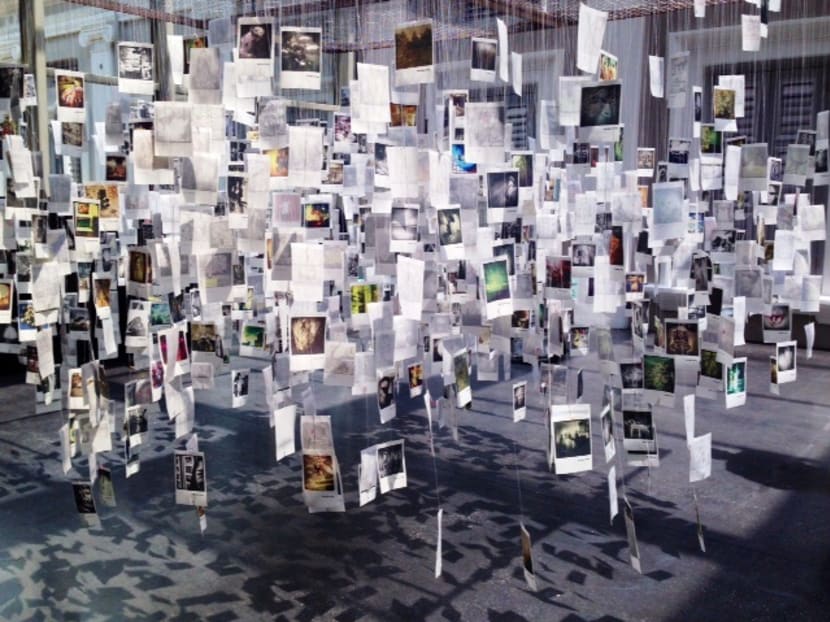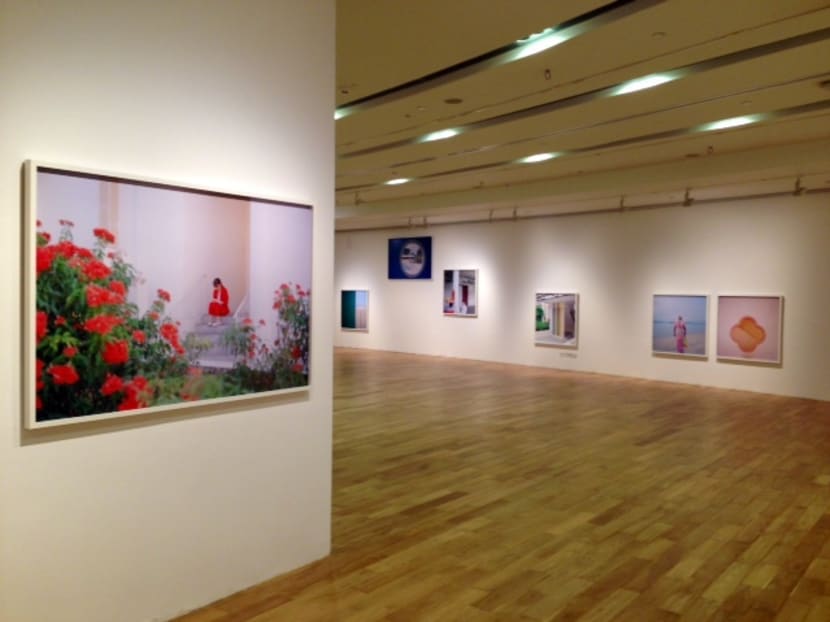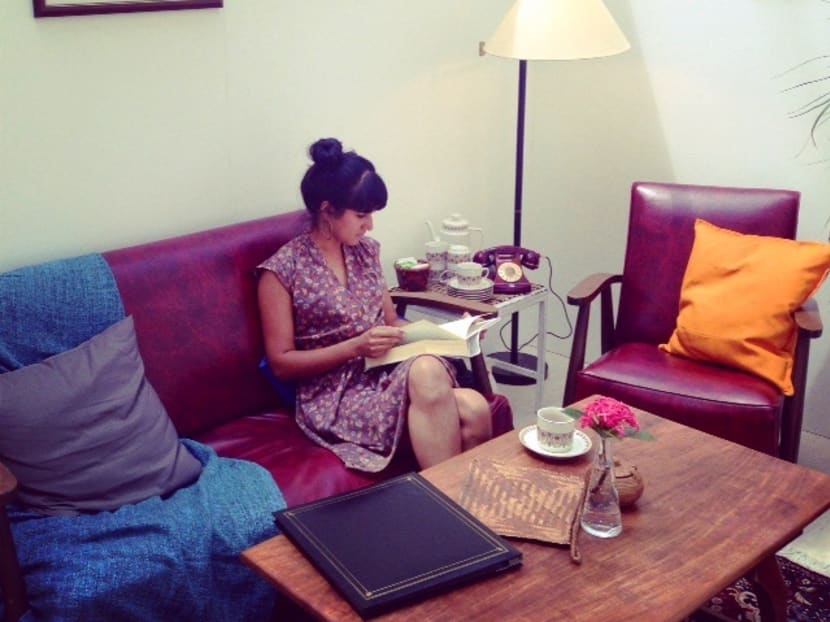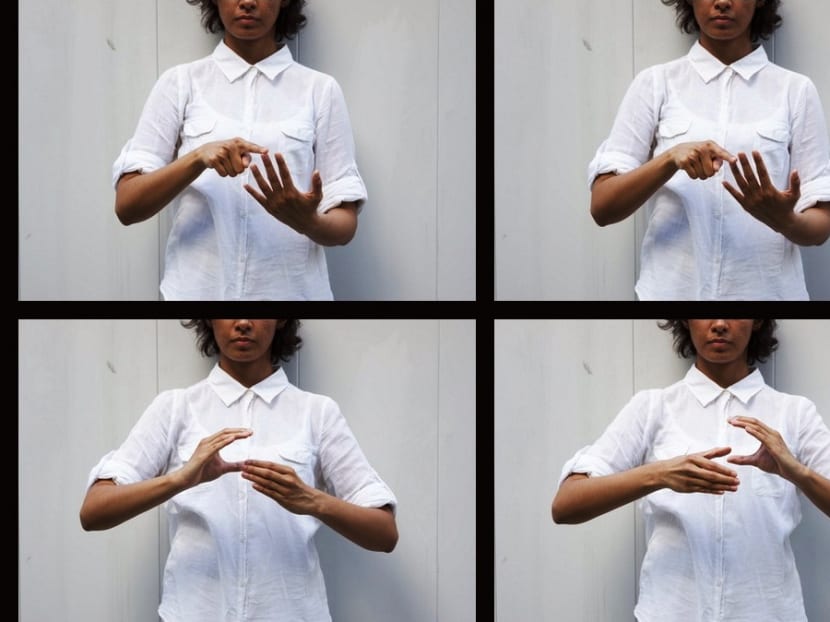S’pore Fringe Fest 2015: The visual arts exhibition round-up
SINGAPORE — We kick of our marathon coverage of this year’s M1 Singapore Fringe Festival and as always, we zoom in first on the exhibitions, which comprise two interactive installations, two photography shows, and an online work.





SINGAPORE — We kick of our marathon coverage of this year’s M1 Singapore Fringe Festival and as always, we zoom in first on the exhibitions, which comprise two interactive installations, two photography shows, and an online work.
Of these, it was photographer Nguan’s first solo show at ION Art Gallery we were looking forward to the most. And How Loneliness Goes doesn’t disappoint, as his now familiar retro-pastel mood images floating online have been blown up to gallery size proportions.
Exploring notions of urban isolation by way of people, architecture, objects and spaces, Nguan’s images swing from quietly dramatic and candid snapshots ripe with narrative (a young girl looking wistfully at her companion holding a phone, a man staring into space in a crowd, a seemingly lost man kneeling at a bus stop) to more detached allegorical still lifes and architectural images (an entire building wrapped in scaffolding, a broken plant pot, a street drain hole in the shape of a heart, a disused swing set).
Taken in its entirety, How Loneliness Goes sees Nguan evoking a sense of atmosphere more than anything else, and it’s instructive to consider the title itself — he doesn’t seem to be concerned about defining or making definitive this idea of loneliness but merely revealing its permutations. Not what loneliness is, but, well, how it goes.
In these photos (and others elsewhere), Nguan’s discerning, sensitive eye is a given, with a seeming knack for being in the right place at the right time to capture overlooked moments. But there’s more at work here. The power of his images, we suspect, is equally due to his approach of framing his moments of isolation in that distinct bright palette of his. Enveloped in daytime, there’s a stark contrast and an uneasy tension between what these images tell us and the mood evoked. For us, it’s this ambiguity that makes heightens the unique familiar-but-not-really quality — “ethereal” as a friend put it — of his work.
If Nguan’s How Loneliness Goes effectively captures and emanates a mood, fellow photographer Tan Ngiap Heng’s installation is a poignant act of release.
Fade... at the National Museum of Singapore (NMS) comprises 1,000 photographs taken on his iPhone, which have been assembled as a kind of “memory cloud” of images. Inspired by his father’s gradual loss of memory due to a stroke in 2010, Tan’s images are meant to slowly disappear, quite literally as visitors are encouraged to take one that they like (there’s a limit of 150 a day, though, and Tan has an extra 1,000 more to be given directly if there’s a high demand).
It’s kind of like the opposite of that old belief about photographs stealing the souls of its subjects — here, you could say Tan is willingly giving away bits and pieces of his. Or perhaps, “sharing” would be a more apt description. Because Tan actually has back-up copies of said images, which in a sense lessens the impact and gravity of the entire project (imagine if Tan completely loses these photos-as-memories). Then again, you could also read this as a side-effect of a digital age where nothing is completely lost.
Nevertheless, it’s an experience walking inside this image cloud. Fade…’s set-up is quite fragile, the photos are printed on paper and hung on strings, and you have to be careful to avoid getting entangled in his memories, as it were.
The kinds of images are varied and other than his name printed on the Polaroid (Instagram?) format photos, no context is given for any of these. Unless you’re lucky to bump into Tan, who can offer the story behind particular photographs (the one we picked was apparently of actress Tan Kheng Hua taken at Penang’s Blue Mansion), these are, in effect, purely random photos taken by photographer Tan Ngiap Heng. Until a personal connection is made and someone else’s image becomes yours. Or until you simply “like” it (in social media terms or otherwise).
The interactivity of Tan’s work is echoed in two other installations at NMS. Shelly Quick’s The Wedding Guest’s Tale was inspired by knitting and the poem The Rime Of The Ancient Mariner by Samuel Taylor Coleridge (a story-within-a-story element in the poem). Of the two, it’s the former that’s clearer: You’ve got a series of sculptural objects alluding to nests and wedding dresses, and you’re invited to try your hand at knitting. There’s also a soundscape inspired by nests that you can access via a QR code.
To be honest, we didn’t quite get it (and we weren’t quite sold on the installation’s location at the museum’s Concourse). But the thing with an interactive, participatory piece like this is that it’s cumulative. You leave objects (some already have), add on to what’s already been knitted, or you can “cut into the work, take parts away or weaken the structures”. So the best time to check this out isn’t at the start but later on, when the piece has evolved, hopefully with your input. In the meantime, Quick apparently drops by quite regularly, so perhaps she’ll be able to ease you into this piece that does look to be about forging communities and facilitating interaction.
You won’t have any problem meeting the artist for the installation opposite Quick’s, though. Asha Bee Abraham is going to be holed up in her makeshift living room for the entire duration of her relational art piece Where The Heart Is. She’ll even serve you tea as you have a chat about what “home” means.
It’s a cosy, unassuming set-up and the next thing you know, you’re having a pretty lively discussion with a wonderful host about this particular topic (which is obviously something close to my heart, being a non-Singaporean who has lived here for a decade). It’s a two-way conversation and you find out Abraham’s lived in Australia all her life, having moved there as a child, yet she’s still a Singaporean citizen whose parents live here. What happens in the end? She’ll be posting her reflections at http://www.wheretheheartis2015.tumblr.com.
And speaking of websites, you also have Jason Wee’s Mambo Night For A King (http://www.handsignsfortheking.com/). Apparently inspired by Zouk’s Mambo Jambo nights (and all those complicated hand gestures clubbers do), Wee, whose practice occasionally goes into signs, symbols and codes, juxtaposes a series of these (created by participants) with text taken from former Prime Minister Lee Kuan Yew’s memoir From Third World To First: The Singapore Story. I’m still figuring this out, but the first set of moves is already up. Time to bust some moves.
All exhibitions run until Jan 25 at the National Museum of Singapore (except for Nguan’s at ION Art Gallery, and Jason Wee’s online). Free admission. For more details, visit http://www.singaporefringe.com/








